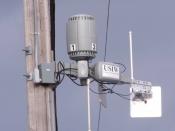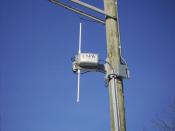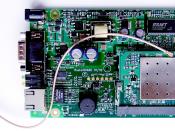It?s hard to buy a laptop computer today that doesn?t come with a Wi-Fi chip: a built-in radio that lets users surf the Web wirelessly from the boardroom, the bedroom, or the coffee bar. People love Wi-Fi because a single base station?a box with a wired connection to the Internet, such as a DSL, cable, or T1 line?can broadcast to multiple users across distances as great as 100 meters indoors and 400 meters outdoors. But there?s a new technology standard on the way that will make Wi-Fi look feeble. It?s called WiMax, and it provides wireless broadband Internet connections at speeds similar to Wi-Fi?s?but over distances of up to 50 kilometers from a central tower.
?Metropolitan area? wireless networking at broadband speeds isn?t new, but the specialized equipment that receives the broadband signals has typically been too expensive for everyone but large businesses. Now that U.S. computing and communications firms are gradually reaching consensus on the details of the WiMax standard, however, those prices could come down significantly.
Industry agreement on details such as how to encrypt WiMax signals, which frequencies to use, and how to provide multiple users with access to those frequencies will finally allow companies like Intel to manufacture mass quantities of WiMax-enabled chips for use in broadband wireless equipment. And that?s expected to eventually bring WiMax receivers into the $50 to $100 price range of today?s DSL and cable modems, meaning that millions of users could eventually drop their current Internet service providers?often local phone or cable companies?and simply access the Internet over rooftop antennas at the other end of town.
WiMax?s first appearance, however, will take place in more public venues. Equipment meeting the standard will allow a new wave of small and medium-sized businesses to go wireless, abandoning the expensive T1 lines...


